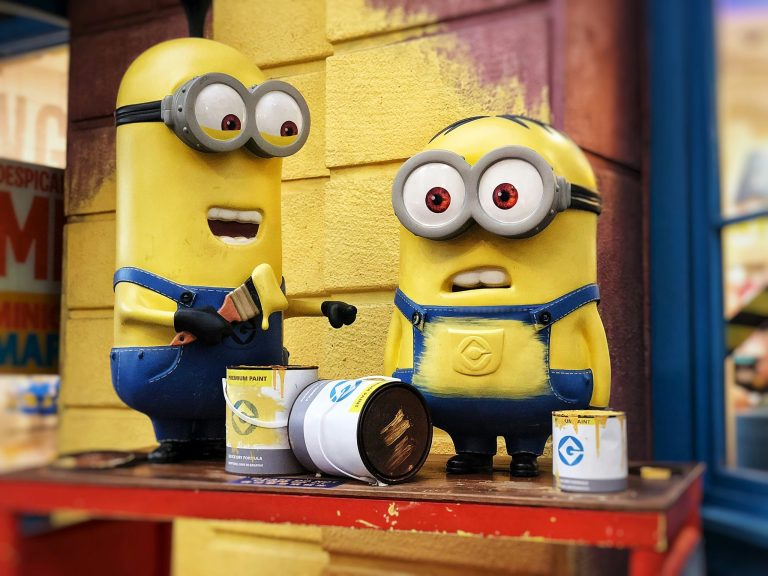Crafting Great Characters Starts and Ends with Motivation
This material ran on my blog four years ago, but it’s worth sharing again!
Most fiction writers know that character is at the heart of a story. Whether you are writing short or long fiction, you need terrific characters.
But what’s in a character? And how much do you need to know about your characters before you start writing?
The depth of detail you develop for your characters may vary. It stands to reason that you aren’t going to put as much work into crafting minor characters as you would major ones. And the most important character—your protagonist—should have the most depth.
How deep should you go? That’s a good question. Some writers spend months working on a character: her looks, her history, her family, her issues. But often the details a writer works up are trivial details.
Avoid Useless and Boring Descriptions
I’ve edited manuscripts in which the writer goes into long paragraphs about each character’s physical attributes—hair color and eye color in particular. Often times, these descriptions are plopped down as an information dump and are not coming through the filter of POV.
What do I mean? In any given scene, you are in a character’s POV. You are in her head, hearing her thoughts, everything that takes place being filtered through her emotions and mind-set and attitude. So when a person walks onto the stage, that character is described by and through the POV filter.
This is what you want. Instead of naming a character and describing him as “six feet tall with brown hair and green eyes” (really, how interesting or helpful is that?), which is just generic non-POV info, your POV character might see Ralph as “a slovenly dude that looked like he’d just got off a weeklong bus trip without ever shaving or bathing—he could smell the stench from across the room—scratching at his neck like he had lice, his beer gut spilling over his fat leather belt.”
Do we need to know that the “dude” has brown hair or green eyes? I think not. We just need to see the dude through our POV character’s eyes, filtered by his own feelings and life experience and upbringing. The voice and personality of your POV character is what’s important—how he sees the world and others around him. Not the eye or hair color.
And please, don’t just find a perfect photo of how you imagine your protagonist in a magazine, cut it out, pin it to your wall, and call it good.
Motivation Is Everything
So instead of focusing on generic descriptors for your characters, consider the factors that are much more important.
And the first key to creating great characters is in exploring motivation. Motivation is everything in a story—with every character.
Why?
Your protagonist is going to pursue a goal for the bulk of your story. His inner motivation is what presses him toward that goal. He needs a strong reason for going there. Your secondary characters need motivation too. Your antagonist’s motivation is centered on stopping your protagonist from reaching his goal.
When you create a character, you have to first know his motivation, and from there you can work backward. Meaning, you need to get to the source of that motivation.
If your character is a cop who is going to risk his life saving a child who’s been kidnapped, you have to know why he’d do that. And you’d have to come up with a believable reason. Which takes you on a path that reveals background, past experience, personality, wounds, fears, passions, and beliefs.
In fiction, if your characters do things because “they just feel like it” or “that’s just the way they are,” your story will be shallow. Real life might be full of people like that, but novels need to be packed with characters with depth and history.
You Have to Put in the Work
Does that sound like a tall order? If you’re not willing to put in the time and work to go deep into motivation and create believable characters, then why do you bother to write fiction?
While this may sound harsh, a lot of writers are enamored with the idea of having written a novel or with getting published but not so much with the process and effort it takes to craft terrific stories filled with terrific characters.
Other writers just don’t have a clue how to craft great characters. And that’s okay because they can learn how. If you’re one of those writers, struggling with how to craft great characters, this series of posts should help you. (And be sure to check out all the posts I did last year on archetypes—just type that word in the search bar.)
I’m all for avoiding wasting time. For using time proficiently and productively. So to help you avoid spending hours or weeks in coming up with characters that ultimately are flat, boring, shallow, or a bad fit for your premise, we’re going to explore the important things you need to know about your characters before you start writing (or begin rewriting).
Let’s apply this specifically to your protagonist, but I’ll also encourage you to work up this kind of depth with all your major characters.
Give Them Room to Breathe
If you spend time just on these various aspects of your protagonist, you’ll probably have enough there to start writing. You don’t need to write eighty pages of notes detailing every key moment in a character’s life. It may be counterproductive to do that, and I’ll explain why.
During the writing process, many authors find their characters come to life and reveal more about themselves. This has certainly been my experience in my twenty novels populated with more than a hundred major characters.
I love breathing life into my characters and then letting them run amok. I learn shocking things about them, and they often amaze me with their insights and actions.
But think about it: before your characters can take control of their lives, you have to form them from the dust of your imagination and breathe life into them. And that takes work and attention to detail.
Granted, we aren’t gods that have to invent every molecule (thank God!). But we do need to pour enough key ingredients in that pool of creativity to spark life into the characters we create. So you don’t need to write the “bible” on each character. You just need to know these basic things, and then you can let them loose.
What Motivation Is All About
The first thing we need to delve into is his primary motivation for pursuing his visible goal. This is of course the most important and most obvious. Novels are about one character chasing a goal (to retrieve something, to get something or somewhere, to rescue or save something, to win something, to find something, etc.). The inner motivation (tied to the core need) is what pushes him toward that goal.
So think about working backward and start with this—the big picture, your premise. If you’re writing The Martian, and your character’s goal is to get off Mars, which means surviving nearly four years alone before a rescue can be made, his motivation is to survive. Every scene from the inciting incident forward centers on that goal and the motivation driving toward it. Sounds simple, but a whole lot of writers omit this, and thus end up with novel failure.
The primary motivation ties in with the core need. You might think this is the same thing as inner motivation, but not necessarily.
Your core need might be to get your father to approve of you because your entire life he’s treated you terribly. But this isn’t necessarily what’s motivating you to push hard to make top of your MBA class, though it could be a factor. Your inner motivation for that might be to get approval from peers, get a great job to pay off your school debt, or win the heart of the cute girl in the front row. The inner motivation is tied in with the goal. The core need is about your personality and subconscious motivation.
How does motivation arise in us? Aside from genetics or personality or individual tastes or interests, often past events inform it. Whether overall upbringing, a series of incidents, or one impacting event, something (or things) in our past create that soup of motivation.
Spend a moment to think about yourself. What main goals are you pursuing in your life right now? What’s most important to you? Then consider the why. Why are you pursuing this goal? If you’re in school studying to be a lawyer, you might be doing it because you want to make a lot of money and attain that prosperous lifestyle you’ve yearned for. Or maybe you want to be a lawyer because you’re passionate about defending the rights of those oppressed.
Think about why you pursue these goals. Think how much can be attributed to your personality. Think about your upbringing and how that might have influenced you. Maybe you can’t think of anything other than “I want to be a writer because I enjoy writing.”
And while that’s perfectly all right and commonplace with just about any pursuit, as I mentioned, we don’t want our characters to be chasing after a goal just because “they feel like it.”
We want our fiction to be stronger and more intriguing than ordinary life (I say ordinary because a lot of life is highly intriguing and the stuff that makes great fiction stories).
So dig deep into your character’s motivation. I believe if you give your character a strong motivation based on specific events or circumstances in his past, you’ll have a compelling character with depth. Which brings me to the topic of our next post: the wound.
Your thoughts? What protagonist in a novel you’ve read stands out with huge motivation? Share why that character is so driven toward his goal? What motivation have you worked out for your protagonist in your current novel?
For more help on developing characters, be sure to download my extensive CHARACTER DEVELOPMENT SHEET. By spending time creating a history for your characters—not just your protagonist but all your main and secondary characters—you will take your story to a much higher level of believability, which results in greater reader satisfaction!
And check out my extensive online video course Your Cast of Characters!
Featured Photo by Joanna Nix-Walkup on Unsplash












Yes, knowing what motivates your characters is essential; but I do find that that a photo of someone who resembles my MCs helps me to envisage them. I write romances, and perhaps this is one genre where the writer may be excused for mentioning at least their most significant features.
May I cite an example from my WIP? The male MC/antihero sees the heroin for the first time, in the Co-op:-
“He noticed a young woman in the clothing section, reaching for a pair of boots on the top shelf. Something about her caught his attention, and he lurked behind a display of milking salve and horse liniment to watch her. Short chestnut curls framed a tanned oval face, bare of make-up. She had an air of frailty. Her soft lips were parted in her effort of reaching up. Boots safely in her trolley, she looked around, and their eyes met briefly. He caught his breath. Big, shadowed violet-blue eyes and drooping shoulders; she radiated despair. He had the feeling that he was intruding on some private grief.”
The intention of the description is that he she initially catches his attention and interest by her looks. The description of her features has a purpose. Similarly, when she encounters him in the next chapter, his looks serve to underline her initial dislike of him.
So, like all rules, I’d suggest that this one can be broken, with reason.
PS. You’ll be glad to know that my WIP does have its happy-ever-after!
Apologies for the type – he meets the heroine (that last ‘e’ is so important!)